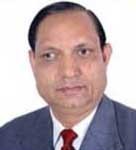“Under the technical career path, an individual who starts off as a software engineer can grow to the highest level of a chief technical officer (CTO). And under the managerial career path, he can grow to the level of a business line head,” says Prasad.
While recruiting, firms usually look at a combination of a consistent academic record and soft skills. Though the Indian academia is churning thousands of engineers per year, there is a significant gap between the need of the industry and what the freshers bring to the table.
Of over 450,000 technical graduates churned out every year from engineering institutes, only 25 to 30 per cent are employable. This in itself is an indication of the ‘shortage’. To be fair, even this 25-30 per cent is not really ‘industry ready.’ In order to reduce the ‘gestation period’ of freshers, there is still a need for training and investment. They are not directly productive from day one.
So when you are looking at a possible employment opportunity, you need to know what’s in demand there? Let’s therefore focus on the industry expectations.
Where does communication begin?
“For optimising telecommunication applications, even professionals with science and engineering background entering the telecom industry, often require specialised training in theory and practice in order to properly handle different types of machines and instruments in various systems of telecom equipment, both in wired and wireless communication,” says K.S. Mittal, director-project at Mobile Communication (India).
[stextbox id=”info”]
For optimising telecom applications, even professionals with science and engineering background entering the telecom industry often require specialised training in theory and practice in order to properly handle different types of machines and instruments in various systems of telecom equipment, both in wired and wireless communication.
background entering the telecom industry often require specialised training in theory and practice in order to properly handle different types of machines and instruments in various systems of telecom equipment, both in wired and wireless communication.
—K.S. Mittal, director-project, Mobile Communication (India)
[/stextbox]
As an aspiring professional, you better start from the base level. A basic telecommunication system consists of three elements: a transmitter that takes information and converts it into a signal, a transmission medium that carries the signal, and a receiver that receives the signal and converts it back into usable information. For example, in a television broadcasting system, the broadcast tower is the transmitter, free space is the transmission medium and the television set is the receiver. Often telecommunication systems are two-way with a single device acting as both a transmitter and receiver—transceiver.
Your mobile phone is an ideal example of the transceiver. You can begin with the principles of telecommunication. Next, understand a simple but versatile system and upgrade to complex ones in a realistic manner.
How to learn communication?
Start with the signaling system. The telecommunication system can be represented by a generalised model consisting of an information source, modulation system for coder, decoder for demodulation system, destination and, of course, transmission system or channel as the central feature. Delve a little deeper, you’ll find that almost all channels have a tendency to distort signal. A telecommunication engineer should learn how to minimise distortion by careful choice of the transmitted waveform. To do this, you must be able to define and analyse both the signals and the channels through which they are transmitted. Put an emphasis on the numerical methods like discrete Fourier transformations and the relationship between time and frequency domain representation.
The next thing you need is to link with SONET and explore modulation and demodulation. Your realistic knowledge of electronics circuit techniques will be useful at this stage. Though real communication is always accompanied by noise, it is better to consider the effect of noise after gaining basic ideas of modulation. Know the technology behind amplitude modulation (AM) as well as the economic factors affecting the choice of an AM system. In this way, you will get an idea of phase modulation, frequency modulation and different modulators.
Knowledge of some advance transmission, like frequency-division multiplex-access (FDMA) and time-division multiple-access (TDMA), or non-linear coding related procedures, like companding (a combination of COMpressing and exPANDING), is ‘nice to have.’ In fact, you may get a fair idea of the code-division multiple-access (CDMA) systems here.
Realise the challenges
Your next challenge is to provide solutions for a real communication system. Take any of these systems, the first problem you have to solve is noise. Identify physical sources of noise as well as noise properties of the networks. Error detection and correction related activities are must for any real system. So try to understand them both in PSTN and wireless networks.
Power saving is another aspect gaining importance in communication systems. Telecommunication is mainly a high-frequency transmission system. Thus, the transmission theory is important for communication engineers as it provides them the means for making the most efficient use of power and equipments at their disposal. As an aspirant, you also need to spend time to understand this theory.






